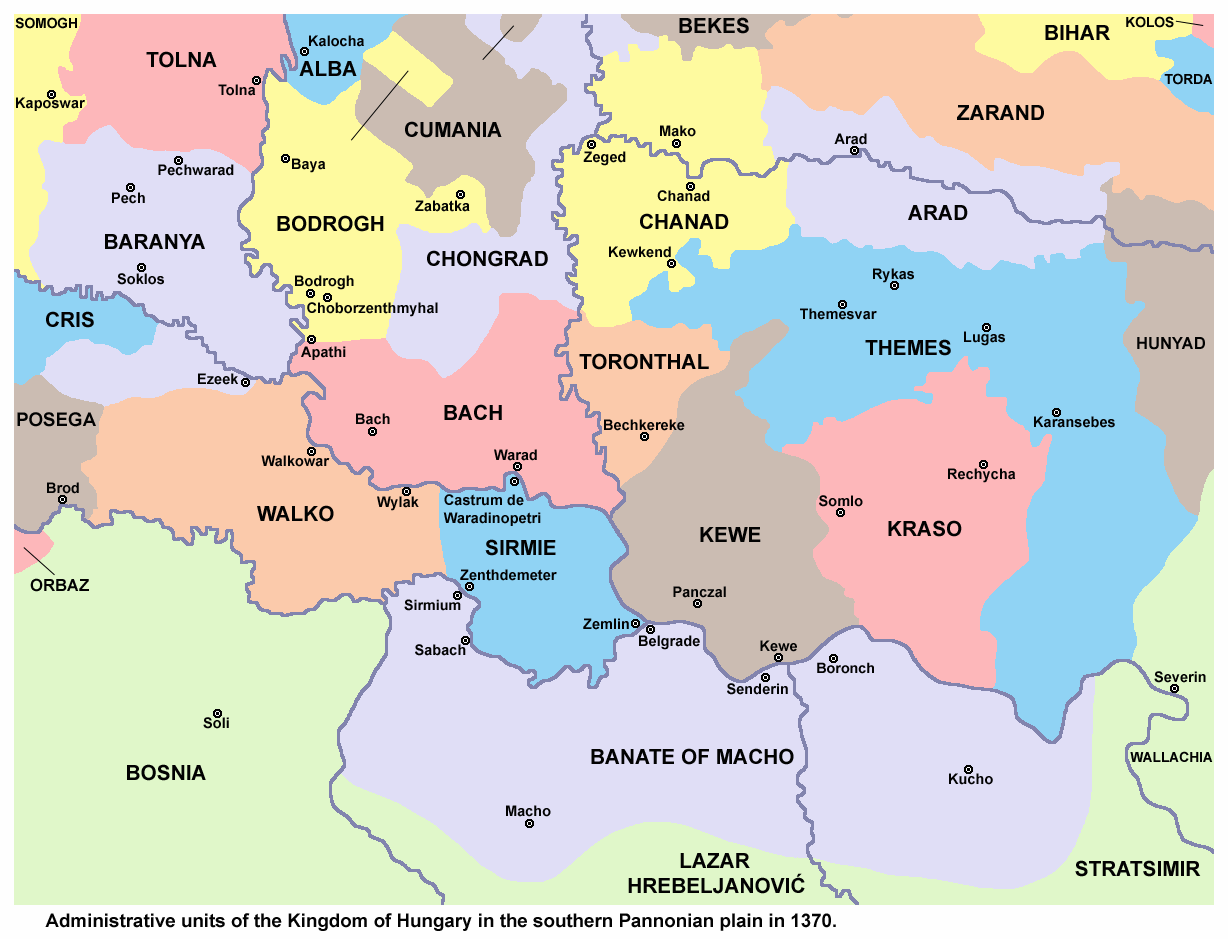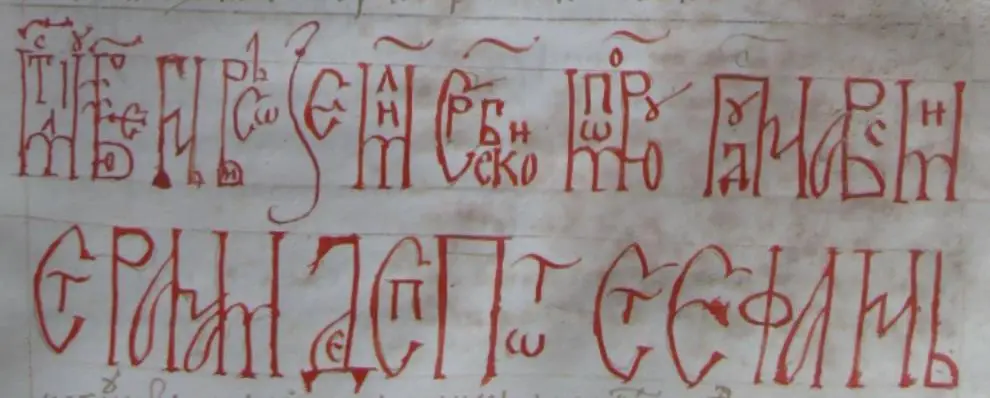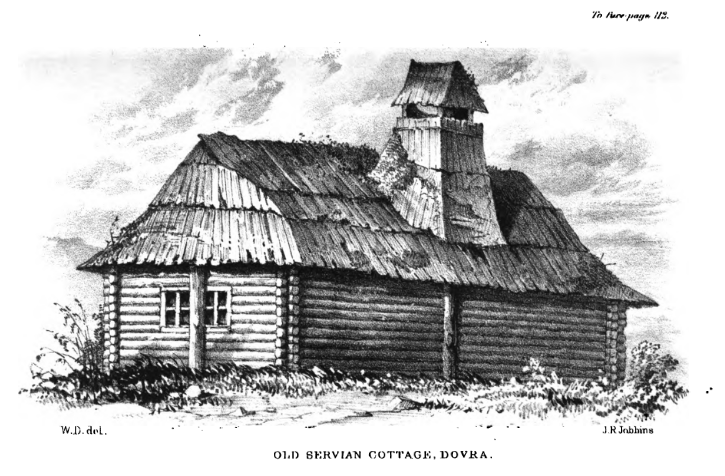By: Jevto Dedijer
VI
Since I had a pretty short time frame in which I had to finish this article, I could not complete a task which I initially had in mind, which is to establish the number of villages, based on reliable sources, which were populated by Serbs in the first half of the XIX century and to compare it to the state of affairs today. In this way it could be established how far west Serb settlements reached and and which areas were Serbian in the first half of the XIX century. I started working on this question, and have so far gathered the following information which I present here with only the most necessary of comments.
Around mid-XIX century Russian consul Gilferding found in Prizren “around 3000 Muslim, 900 Orthodox and 100 Catholic homes and around 12 000 inhabitants of the male sex” (Bosnia, Putevya Zam’tki pisma k A S Gomyakovu. Moscow 1859. p. 2.) According to the aforementioned Turkish statistics the number of residents in Prizren has not increased much in the last 50-60 years and that the numeric proportions between the religions has not changed much.
Around Prizren Gilferding found this number of families. In the real Drim area (“sopstveniy Podrim”) 3000 Albanian and 300 Serb orhtodox houses, in Rahovac 50 Albanian and 100 Serbian houses*, in Sredska area 200 Albanian and 300 Serb houses, in Podgor 1000 houses of Albanian Muslims and around 20 of Albanian Catholics and around 300 Orthodox (Bosnia, p.10). According to this in the Prizren area without the Sirinić villages at the time there as around 1000 houses, which means that in fifty years the number of Serbian houses multiplied only by 143 to one thousand or 14.3% which comes out to 0.28% per year. However the number of Muslim Serbs multiplied significantly. So for example in Rahovac the situation looks as follows after about 50 to 60 years: Orthodox Serbs 141 houses, Muslim Serbs 416 houses; which means that in fifty years Orthodox Serbs only by 41 houses, which comes out to 41% in fifty years or 0.82% per year. However Muslim Serbs, who Gilferding counted as Albanians due to the superficial counting, multiplied at the same time from 50 to 416 houses, that is for 366 houses or by 732%. This would mean that the annual growth of the Muslim population was 14.6% annually! This increase is completely unnatural and it can be explained only by the conversion of great masses of Orthodox Serbs to Islam.
Similarly Gilferding states that the Kosovo villages of Robovci, Vojnovci and Topličani are Christian (Bosnia, pp 21-22). However today in Vojnovci there is not a one Serbian house and there are 38 Albanian ones, in Topličani there are 22 Orthodox Serbian houses, Albanian 16 and 16 muhajir houses (Cvijić, “Основе”, III, pp 1177-1178) and in Robovci according to the metropolitan lists there are only 17 Serbian houses.
In 1844, Dr Joseph Müller’s book came out under a long title: “Albanien, Rumelien und оsterreichisch montenegrinische Grаnze dishricts von Budua in Osterreichisch Albanien, Praag 1844, (p XII+103,8o). This Müller lived a long number of years as a doctor in Turkey, travelling through all these areas and was excellently familiarised with the circumstances of European Turkey of the time. For this book, which is still deserving of being read, the foreword was written by Pavel Šafárik and he says that it is characterised by “durch Genauigkeit und Treue in Wiedergeben des Selbstbeobachteten und durch Shenge in Absondern des fremher Entlehnten”. Müller found that in the Peć region there are 65 000 inhabitants of which 31 000 Christians, in the Đakovica (Jakowa) region 52 000 inhabitants with 21 000 Christians, in Prizren 78 000 inhabitants with 29 000 Christians and in Zadrim 19 000 inhabitants with 16 000 Christians. As Serb villages he lists: Kremovik, Mirošić, Čupevo, Grebnik and Zlokuće on the banks of White Drim (p. 21). Today in Čupevo there is not one Serbian house and there are 15 Albanian, in Grebnik there are 12 Serb, 20 Albanian ones, in Zlokuće there are only 30 Catholic Albanian ones; without one Serbian one** (Cvijić, III pp 1186-1187). Similarly as Serbian villages he lists Crnce (Crca), Veličani, Ljubožda, Novo Selo and Bijelo Polje in the north of Peć and then Jošanica, Banje and Kopilik by Kijevo. Of those villages there are no Serb houses in Crnci today, while there are 30 Albanian ones, in Novo Selo 3 Serbian and 20 Albanian ones, in Banje 27 Serb and 3 Albanian ones and 9 houses of Bosnian mohajirs, in Kijevo 20 Serbian and 20 Albanian ones (Cvijić, ibid). For the village of Istinići he says that it is inhabited exclusively by “non-unionised Greeks” (that is Orthodox population) (Müller’s work, p. 76). However today in Istinići there is not one Serb family, but there are 150 Albanian houses (Cvijić, Основе, III. p. 1189). He also mentioned the villages of Rastavic with 80, Babaj with 200 Serb inhabitants and Velja Koronica with 160 inhabitants. For the latter he says that they belong to a Serb tribe which penetrated furthers to the west. (Müller, ibid, p. 76). He mentions Serbs who live in the whole basin of the Erenik river,*** between Dečani, Đakovica and a settlement called Fshai**** on the Drim [river, translator’s note] which is two hours north of Svanjski Most. For the abovementioned villages north of Svanjski Most he gives this statistic: Kremovik 40, Mirošić 210, Čupevo 8 and Grebnik 50 houses, 30 inhabitants of Klin “of the Serb tribe, but of Muslim faith”. In Fshai lives “70 mostly Muslim inhabitants of the Serbian tribe.” Around Svan are the villages: Petrušane, Rać, Doli, Kušavica and Snać “where the Serbian national element mixes with the Albanian one” (p. 79). As I am informed, in these villages there are no Serbian houses today.
The number of inhabitants of Peć in 1838 was 12 000. Among them there was 150 families of “non-unionised Greeks” and 20 Catholic ones. For the inhabitants of Peć he says: “Der Abstammung nach bilden die Slaven die ьberwiegende Mehrheit der Bevцlkerung, indem man nur 62 osmanische Familien hierorts findet”(p. 74.). It should be mentioned that he often substitutes the name Serb with Slav and wherever he mentions Slavs one should read Serbs. According to the already cited statistics by Cvijić it looks like the number of Orthodox households in Peć has multiplied in the last 80 years by almost 400, but disproportionately more Albanian Muslim households. If these statistics are accurate, the number of Muslim Serbs in Peć has reduced terribly. Which means that many were Albanised.
In Đakovica he found 1900 households with 18 000 Muslim, 450 Catholic and 2600 Greek-Orthodox inhabitants”. The population is differentiated by nationality as follows: 17 000 Albanians, 3800 Slavs and 180 Ottomans (p. 78). These numbers say much about the immense recasting of the Muslim Serb and the terrible extermination of the Orthodox Serb population in the western reaches of Old Serbia. This doctor who could finely sense and see clearly often points out the psychological and cultural differences between the Serbian and Albanian inhabitants, he often gives his more precise opinions about both sides. These opinions were regularly in our favour. This genteel and perceptive foreigner could even 80 to 100 years ago to feel all the weight of the position of the local Serb people and all of our historical tragedy, which was most eloquently spoken of in those areas.
NOTES
* Much earlier Dr Müller found 310 Orthodox inhabitants in Orahovac (Oravac)
** In Müller’s maps which was included with the work on the left bank of the Drim all these villages are noted. The first two villages I could not find on neither on Derok’s nor the Austrian 1:300 000 and 1:200 000 maps, nor in Cvijić’s census of villages. They probably failed.
*** In Serbian that river is called Renika.
**** Fshai is today an Albanian village, the Serbian name is Sivanj.
Translated by Books of Jeremiah



